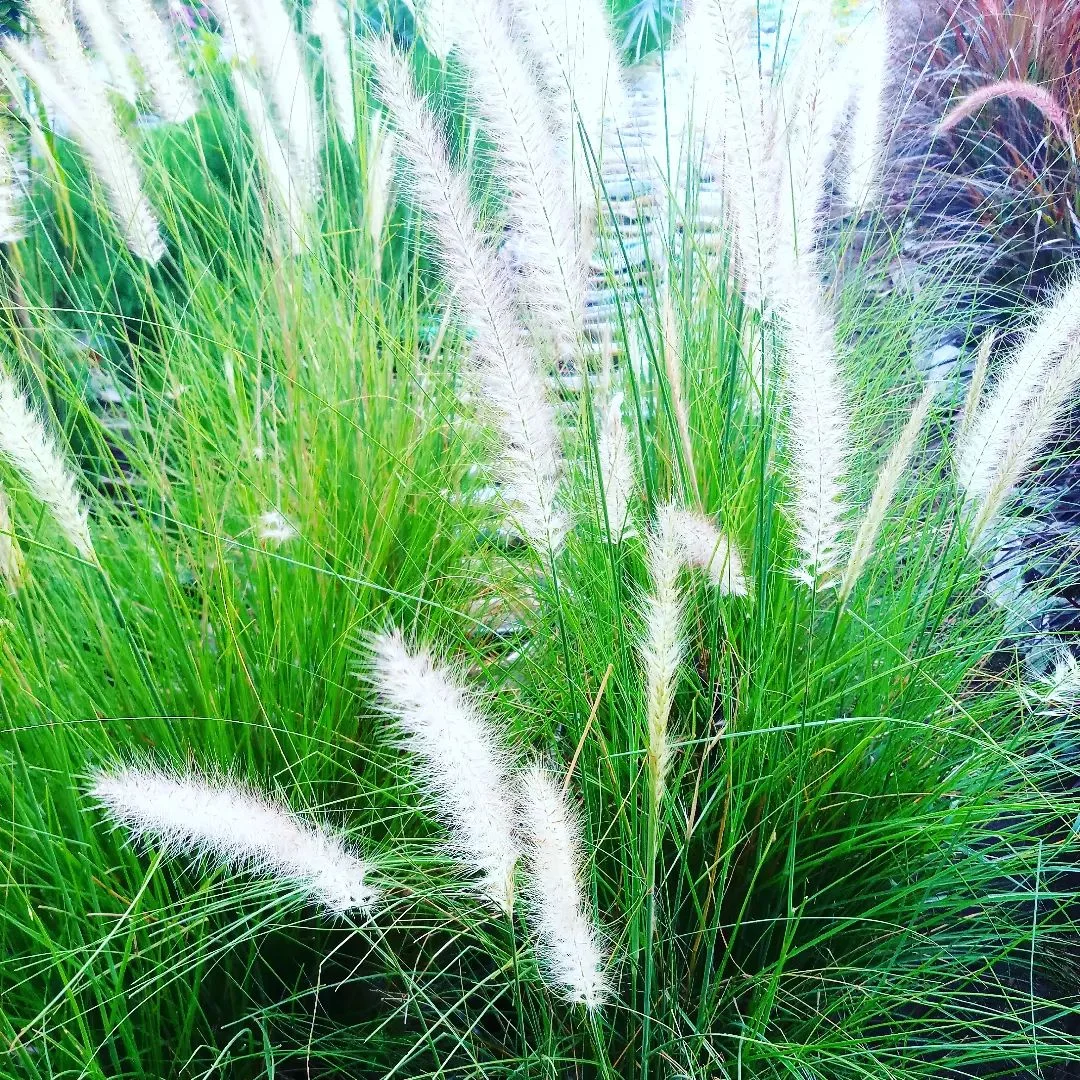Discover the beauty and benefits of White Fountain Grass. Learn how to grow and care for this elegant ornamental grass in your garden landscape.
White Fountain Grass is a stunning ornamental grass that can add elegance and movement to any garden. With its flowing, fountain-like appearance and soft white plumes, it’s a popular choice for many gardeners. This guide will cover everything you need to know about growing and caring for White Fountain Grass.
Here’s a detailed chart for white fountain grass:
| Category | Information |
|---|---|
| Botanical Name | Pennisetum alopecuroides ‘Hameln’ (White Fountain Grass) |
| Common Name | White Fountain Grass |
| Plant Type | Perennial ornamental grass |
| Hardiness Zone | 5-9 |
| Sun Exposure | Full sun to partial shade |
| Soil Type | Well-drained soil, tolerates a variety of soil types, including sandy and clay soils |
| Watering | Moderate; drought-tolerant once established |
| Growth Habit | Clumping, fountain-like arching stems |
| Height/Spread | 2-3 feet tall; 2-3 feet wide |
| Special Features | White, feathery plumes in late summer to fall; low-maintenance; attracts birds; adds texture and movement to the garden |
What is White Fountain Grass?

White Fountain Grass, also known as Pennisetum setaceum ‘Alba’, is a variety of fountain grass. It’s part of the Poaceae family, which includes many types of grasses.
Here are some key features:
- It grows in clumps, reaching about 3-4 feet tall and wide
- The leaves are narrow and arching, creating a fountain-like shape
- In late summer, it produces fluffy white flower plumes
- It’s a perennial in warmer climates but often grown as an annual in colder areas
Why Grow White Fountain Grass?
There are many reasons to add White Fountain Grass to your garden:
- Visual appeal: Its flowing form and white plumes are eye-catching
- Low maintenance: Once established, it needs little care
- Drought-tolerant: It can handle dry spells well
- Versatile: It works in many garden styles, from modern to cottage
- Wildlife-friendly: Birds enjoy its seeds
How to Grow White Fountain Grass
Planting
Follow these steps to plant White Fountain Grass:
- Choose a spot with full sun to partial shade
- Prepare the soil by loosening it and removing weeds
- Dig a hole twice the size of the root ball
- Place the plant in the hole at the same depth it was in its pot
- Fill in with soil and water well
Soil and Sunlight Needs
White Fountain Grass isn’t picky about soil, but it prefers:
- Well-draining soil
- Slightly acidic to neutral pH (6.0-7.0)
- Full sun for best growth and flowering
Watering
Water needs for White Fountain Grass include:
- Regular watering when first planted
- Once established, it’s drought-tolerant
- Water deeply but infrequently
Fertilizing
This grass doesn’t need much fertilizer:
- Apply a balanced, slow-release fertilizer in spring
- Don’t overfertilize, as it can lead to floppy growth
Pruning and Maintenance
To keep your White Fountain Grass looking its best:
- Cut back to about 6 inches above the ground in late winter or early spring
- Remove dead leaves as needed
- Divide clumps every 3-4 years to prevent overcrowding
Common Problems and Solutions
While generally easy to grow, White Fountain Grass can face some issues:
Yellowing Leaves
- Cause: Often due to overwatering or poor drainage
- Solution: Improve drainage and reduce watering
Lack of Flowering
- Cause: Not enough sunlight or too much shade
- Solution: Move to a sunnier location if possible
Invasive Behavior
- Issue: In some areas, fountain grass can spread aggressively
- Solution: Choose sterile varieties or contain the plant’s spread
Landscaping Ideas with White Fountain Grass
White Fountain Grass is versatile in the garden. Try these ideas:
- Mass plantings for a dramatic effect
- Use as a focal point in a mixed border
- Plant in large containers for patios or decks
- Combine with colorful perennials for contrast
- Use in rain gardens or along water features
Companion Plants for White Fountain Grass
These plants pair well with White Fountain Grass:
- Black-eyed Susans (Rudbeckia)
- Purple Coneflower (Echinacea)
- Lavender
- Sedum
- Ornamental grasses in contrasting colors
Seasonal Care Tips
Spring
- Cut back old growth
- Apply fertilizer if needed
- Divide overcrowded clumps
Summer
- Water during dry spells
- Enjoy the developing plumes
Fall
- Reduce watering as growth slows
- Leave plumes for winter interest
Winter
- In cold climates, provide mulch for protection
- Enjoy the winter silhouette
Frequently Asked Questions
Is White Fountain Grass deer-resistant?
Yes, deer generally avoid fountain grass.
Can White Fountain Grass grow in containers?
Yes, it’s well-suited for large containers.
How fast does White Fountain Grass grow?
It’s a moderate to fast grower, reaching full size in one to two seasons.
Is White Fountain Grass invasive?
Some types can be invasive. Choose sterile varieties or manage spreading carefully.
White Fountain Grass is a beautiful and low-maintenance addition to any garden. Its graceful form and striking white plumes can add movement and visual interest to your landscape. By following the care tips in this guide, you can enjoy the beauty of White Fountain Grass in your garden for years to come. Whether you’re creating a modern landscape or a cottage garden, this versatile grass can play a starring role in your outdoor space.
Remember to check local regulations before planting, as some areas restrict certain varieties of fountain grass. With proper care and placement, White Fountain Grass can be a stunning and trouble-free element in your garden design.